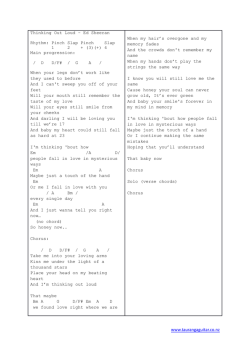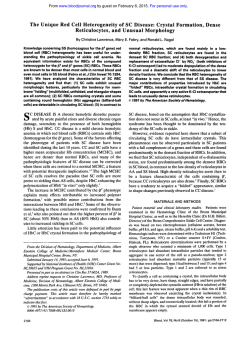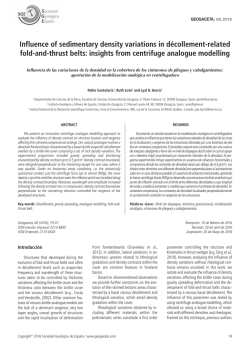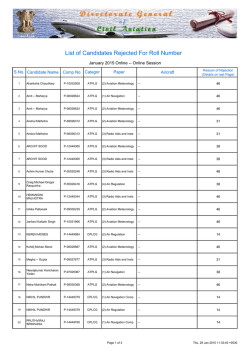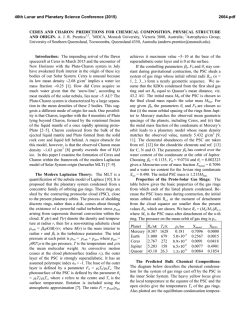
Differentiation/Feedback in Junior Math
Differentiation/Feedback in Junior Math Marian Small February 2015 Primary strategies for DI • Open questions • Parallel tasks Basic Principles of DI - Focus on big ideas - Choice 3 A Big idea - Rather than thinking about what we teach in terms of topics, we can always have big ideas in the background. - They connect ideas across and within grades. 4 A Big idea - These big ideas provide the framework in which to differentiate. - They also help students and teachers build important connections. 5 An open question - List 5 possible fractions that describe this diagram. 6 For example… - - - - Could []/7 have been used? Could []/4 have been used? Could []/2 have been used? Could 4/3 have been used? 7 For example… - 3/7 is part of a whole meaning. - 3/4 is part of a set meaning - 2/4 as ½ is equivalent fractions. - 4/3 is a ratio (of top area to bottom area - 7/6 is a ratio (full amount compared to one hexagon) and improper fractions 8 For example… - - - - - - You have allowed students to think in: Parts of sets Parts of wholes Changing the whole or using ratios Improper fractions Equivalent fractions 9 One more example - You want to find out what students know about measurement formulas. - You might ask students to chose two of these shapes and create those shapes with an area of 15 square units: - A rectangle a parallelogram - A triangle A trapezoid 10 Possible solutions 4 4 2 2 - A rectangle - A triangle A parallelogram A trapezoid 2 4 2 4 6 11 Providing choice - You just saw providing choice by either using an open enough question that there is significant choice in how to respond OR - Two different, but parallel, tasks and the student chooses the one to work on. 12 • In open tasks, you pose a single question that evokes a broad range of responses at many levels. • For parallel tasks, you pose two different questions at different levels but tied in terms of the big idea to which they relate and their context. 13 Grade 3 or 4 (or 5 with decimals) • Use 16 base ten blocks to represent a number. What could it be? 14 Maybe • • • • • 88 907 439 547 286 16 52 133 106 313 15 Samples • ___ x ___ is ALMOST 400. • What are they? 16 Samples • Choose a denominator. It has to be the same for both fractions. Name a fraction between 4/[] and 5/[]. 17 Samples • When you multiply two numbers, one of the digits in the answer is the same as one of the digits you started with (e.g. 4 x 6 = 24). • What could the two numbers be if you don’t use 4? 18 Maybe • 9 x 10 = 90 • 15 x 5 = 75 • 38 x 6 = 228 19 Samples • A shape has a perimeter of 40 cm. What does it look like and what are some of its other measurements? 20 Maybe • It could be 3 6 17 14 6 10 13 8 8 8 13 14 21 Samples 22 Samples 23 Parallel tasks • Example: • Choice 1: A blue pattern block is 1/3 of a whole. What could the whole look like? • Choice 2: A blue pattern block is 2/3 of a whole. What could the whole look like? Solutions • Maybe • Choice 1: Solutions • Maybe • Choice 1: Solutions • Maybe • Choice 1: Solutions • Maybe • Choice 2: Solutions • Maybe • Choice 2: Common questions • Is the whole bigger or smaller in area than the blue pattern blocks? Why? • Is it more or less than double the area of the blue pattern blocks? How do you know? Common questions • Could your whole have actually been made of a single colour of block? What colour(s)? • What fraction of the whole is not covered by the blue pattern blocks? Or maybe • Choice 1: Create a rectangular prism with a volume of 100 cm3. • Choice 2: Create a triangular prism with a surface area of 100 cm3. Common questions • Could your prism be tall? • Did it have to be? • Once you knew the height, how did you find the area of the base? • Once you knew the area of the base, how did you get all the missing dimensions? Or maybe • Choice 1: An apartment building has 19 floors. Each floor has 17 windows. How many windows are there? • Choice 2:An apartment building has 9 floors. Each floor has 25 windows. How many windows are there? Common questions • Are there more than 200 windows? Why? • Is the number of windows odd or even? Why? • Do you with there had been another floor? • How did you calculate…. Your questions? Download at www.onetwoinfinity.ca Mutchmorpm
© Copyright 2026
